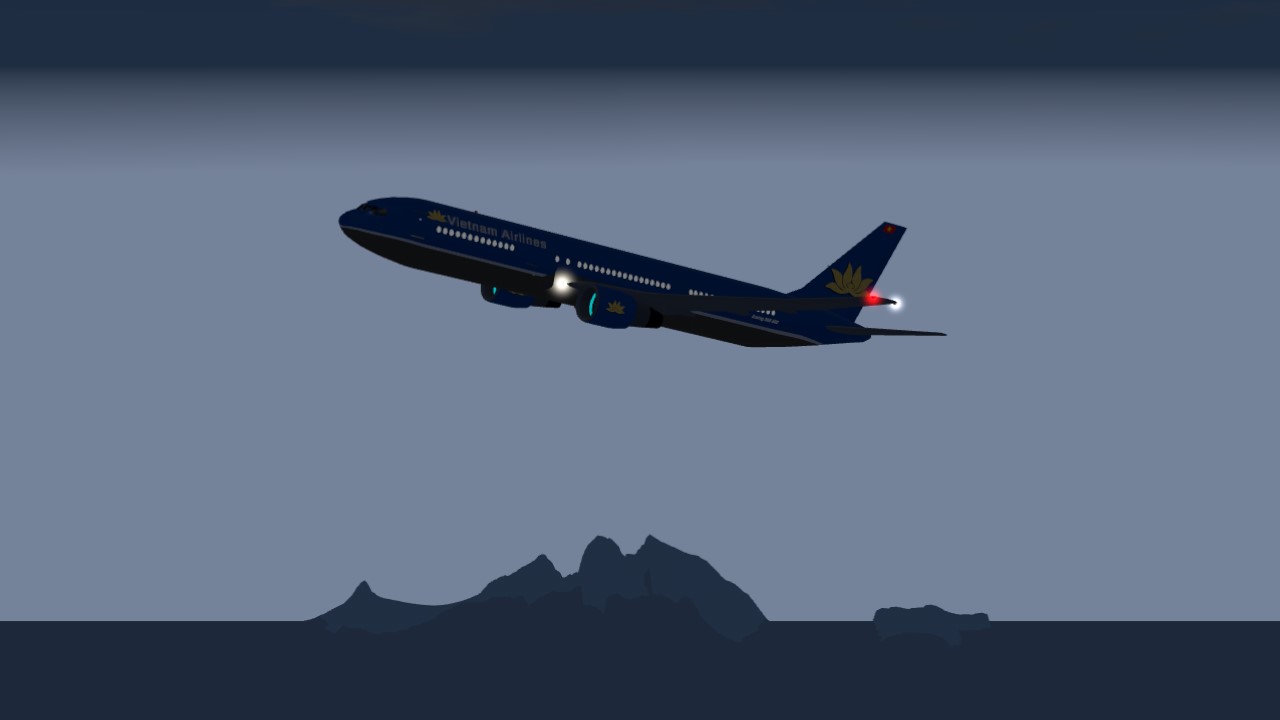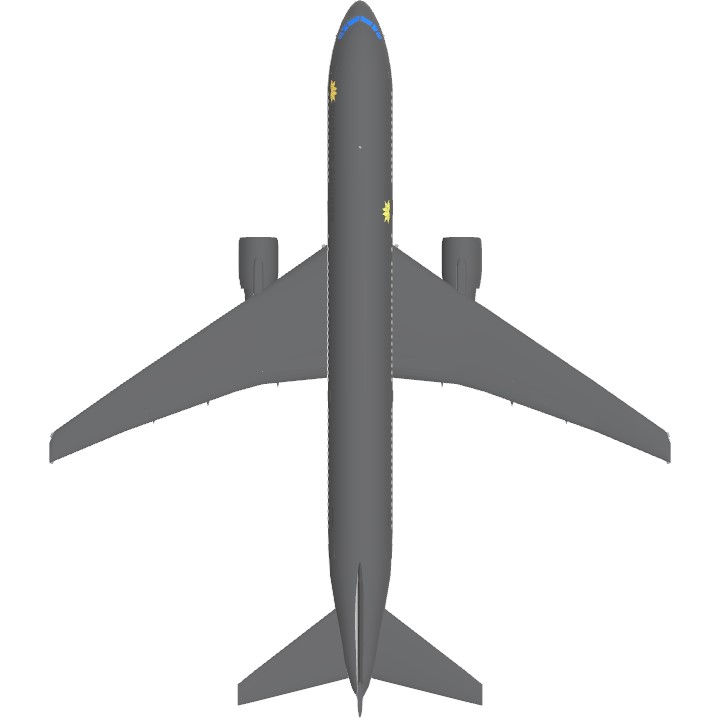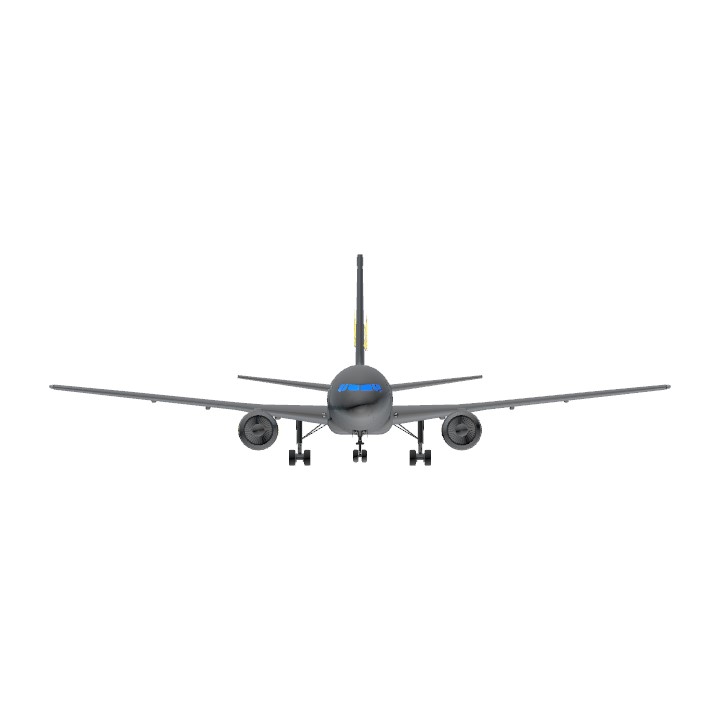New Version
767:
The Boeing 767 is an American wide-body airliner developed and manufactured by Boeing Commercial Airplanes. The aircraft was launched as the 7X7 program on July 14, 1978, the prototype first flew on September 26, 1981, and it was certified on July 30, 1982. The initial 767-200 variant entered service on September 8, 1982, with United Airlines, and the extended-range 767-200ER in 1984. It was stretched into the 767-300 in October 1986, followed by the extended-range 767-300ER in 1988, the most popular variant. The 767-300F, a production freighter version, debuted in October 1995. It was stretched again into the 767-400ER from September 2000.
Designed to complement the larger 747, it has a seven-abreast cross-section accommodating smaller LD2 ULD cargo containers. The 767 is Boeing's first wide-body twinjet, powered by General Electric CF6, Rolls-Royce RB211, or Pratt & Whitney JT9D turbofans. JT9D engines were eventually replaced by PW4000 engines. The aircraft has a conventional tail and a supercritical wing for reduced aerodynamic drag. Its two-crew glass cockpit, a first for a Boeing airliner, was developed jointly for the 757 - a narrow-body aircraft, allowing a common pilot type rating. Studies for a higher-capacity 767 in 1986 led Boeing to develop the larger 777 twinjet, introduced in June 1995.
The 159-foot-long (48.5 m) 767-200 typically seats 216 passengers over 3,900 nautical miles [nmi] (7,200 km; 4,500 mi), while the 767-200ER seats 181 over a 6,590 nmi (12,200 km; 7,580 mi) range. The 180-foot-long (54.9 m) 767-300 typically seats 269 passengers over 3,900 nmi (7,200 km; 4,500 mi), while the 767-300ER seats 218 over 5,980 nmi (11,070 km; 6,880 mi). The 767-300F can haul 116,000 lb (52.7 t) over 3,225 nmi (6,025 km; 3,711 mi), and the 201.3-foot-long (61.37 m) 767-400ER typically seats 245 passengers over 5,625 nmi (10,415 km; 6,473 mi). Military derivatives include the E-767 for surveillance and the KC-767 and KC-46 aerial tankers.
Initially marketed for transcontinental routes, a loosening of ETOPS rules starting in 1985 allowed the aircraft to operate transatlantic flights. A total of 742 of these aircraft were in service in July 2018, with Delta Air Lines being the largest operator with 77 aircraft in its fleet. As of January 2025, Boeing has received 1,430 orders from 74 customers, of which 1,321 airplanes have been delivered, while the remaining orders are for cargo or tanker variants. Competitors have included the Airbus A300, A310, and A330-200. Its successor, the 787 Dreamliner, entered service in 2011.
Vietnam Airlines:
Vietnam Airlines (Vietnamese: Hãng hàng không Qu?c gia Vi?t Nam, lit.?'Vietnam National Airlines') is the flag carrier of Vietnam.[10] The airline was founded in 1956 and later established as a state-owned enterprise in April 1989. Vietnam Airlines is headquartered in Long Biên district, Hanoi, with hubs at Noi Bai International Airport in Hanoi and Tan Son Nhat International Airport in Ho Chi Minh City. The airline flies 117 routes across 19 countries, excluding codeshared services.[6]
From its inception until the early 1990s, Vietnam Airlines was a minor carrier within the aviation industry as it was hampered by a variety of factors including the socio-economic and political situation of the country. With the government's normalization of relations with the United States, the airline could expand, improve its products and services, and modernize its ageing fleet. In 1996, the Vietnamese government brought together 20 service companies to form Vietnam Airlines Corporation, with the airline itself as the centrepiece. In 2010, the corporation was restructured into a limited liability company and renamed Vietnam Airlines Company Limited. A seven-seat management board, appointed by the Vietnamese Prime Minister, oversees the company.[11]
As passenger transport constitutes its core activity, Vietnam Airlines plays a crucial role in the economic development of the country. It owns 100% of Vietnam Air Service Company – a regional airline in southern Vietnam and almost 99% of the low-cost carrier Pacific Airlines.[12] In addition, the corporation earns revenue from airline catering and the maintenance and overhauling of aircraft through a number of its subsidiaries, including Vietnam Airlines Engineering Company and Vietnam Airlines Caterers. The company has also diversified its investments in the aircraft-leasing and airport ground-servicing industries, and is looking to manufacture aircraft components. It controls and operates a cargo division, Vietnam Airlines Cargo.
Vietnam Airlines became a member of SkyTeam in June 2010, making it the first Southeast Asian carrier to have joined that alliance. As of September 2021, the State's stake in Vietnam Airlines is 86.34%, All Nippon Airways holds 5.62%, being a strategic shareholder of the national flag carrier.[13][14]
For aviationVietNam
Credit:
@HorizonWXR
@GalacticaAsia
@SARACONIKaviationIndustry
Livery is 95% Real
FIX TALL
Mobile
Specifications
Spotlights
- xYoshii_ one month ago
- Dissent3R one month ago
- Zerkk one month ago
- SimlpeVietnam one month ago
General Characteristics
- Created On Windows
- Wingspan 156.2ft (47.6m)
- Length 180.9ft (55.1m)
- Height 53.2ft (16.2m)
- Empty Weight N/A
- Loaded Weight 96,387lbs (43,720kg)
Performance
- Power/Weight Ratio 0.605
- Horse Power/Weight Ratio 0.031
- Wing Loading 21.7lbs/ft2 (105.8kg/m2)
- Wing Area 4,447.1ft2 (413.2m2)
- Drag Points 15593
Parts
- Number of Parts 951
- Control Surfaces 10
- Performance Cost 4,768







@Bluesyn Can you make Boeing 777-200ER Vietnam Airlines (VN-A143)?
thank bro
I like this plane